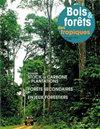Casuarina species in Algeria: reviewing their identity, distribution and symbiotic status
IF 0.6
4区 农林科学
Q3 FORESTRY
引用次数: 0
Abstract
Since their introduction at the beginning of the 19th century, Casuarina species have become important components of the Algerian landscape, yet the numbers of species present in Algeria and their identity, distribution, and symbiotic status are still not well understood. A survey conducted on 2,304 trees in 96 Casuarina stands across Algeria indicates that they are represented exclusively by five species: Casuarina cristata Miq., C. cunninghamiana Miq., C. equisetifolia L., C. glauca Sieber ex Spreng. and C. junghuhniana Miq. Two species, C. cunninghamiana and C. glauca, were the most common – the former occurring more often in the relatively humid and temperate areas of the country while the latter is most frequent in the drier and warmer areas. Production of seedlings of C. cunninghamiana and C. glauca in 12 nurseries resulted in low rates of spontaneous mycorrhizal infection frequency and nodulation, suggesting that inoculation of seedlings with selected mycorrhizal fungi and/or Frankia strains in the nursery would be necessary to improve their establishment in the field. This study is the first survey of the geographical distribution of Casuarina species in Algeria and should lead to more efficient utilization of this widely used tree genus in Algeria.阿尔及利亚木麻黄物种:回顾其身份、分布和共生状况
自19世纪初引入以来,木麻黄物种已成为阿尔及利亚景观的重要组成部分,但阿尔及利亚存在的物种数量及其身份,分布和共生状态仍未得到很好的了解。对阿尔及利亚96个木麻黄林的2304棵树进行的一项调查表明,它们仅由5个物种代表:木麻黄cristata Miq。, C. cunninghamiana Miq。,山毛莲L.,山毛莲Sieber ex spring。C. junghuhniana Miq。两种,C. cunninghamiana和C. glauca,是最常见的,前者更常见于该国相对潮湿和温带的地区,而后者最常见于干旱和温暖的地区。在12个苗圃中生产的cunninghamiana和C. glauca幼苗的自发菌根感染频率和结瘤率较低,表明在苗圃中接种选定的菌根真菌和/或Frankia菌株的幼苗是必要的,以提高它们在田间的建立。本研究是对阿尔及利亚木麻黄树种地理分布的首次调查,将有助于阿尔及利亚更有效地利用这一广泛使用的树种。
本文章由计算机程序翻译,如有差异,请以英文原文为准。
求助全文
约1分钟内获得全文
求助全文
来源期刊

Bois et Forets Des Tropiques
FORESTRY-
CiteScore
1.50
自引率
16.70%
发文量
31
审稿时长
>12 weeks
期刊介绍:
In 1947, the former Tropical Forest Technical Centre (CTFT), now part of CIRAD, created the journal Bois et Forêts des Tropiques. Since then, it has disseminated knowledge and research results on forests in intertropical and Mediterranean regions to more than sixty countries. The articles, peer evaluated and reviewed, are short, synthetic and accessible to researchers, engineers, technicians, students and decision-makers. They present original, innovative research results, inventions or discoveries. The journal publishes in an international dimension. The topics covered are of general interest and are aimed at an informed international audience.
 求助内容:
求助内容: 应助结果提醒方式:
应助结果提醒方式:


